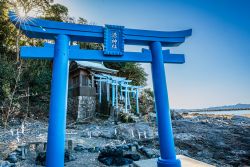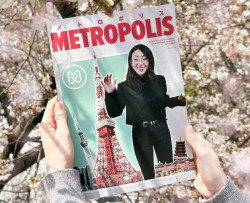
May 27, 2010
Benjamin Skepper
Past and present, East and West collide in the Japanese-Australian composer’s strange creations
By Metropolis
Originally published on metropolis.co.jp on May 2010

Courtesy of Benjamin Skepper
Stepping into the “No Man’s Land” event at the soon-to-be-demolished French Embassy in Hiroo last winter, you might have thought you’d fallen through a wormhole into an alternative past.
Situated on the graceful parquet wood floor are a harpsichord and cello; a lanky, handsome man of indeterminate Asian-Caucasian features in an 18th-century tricorn hat makes final adjustments to his instruments. But for the presence of some digital effects boxes on the floor, you could be attending a chamber music concert in a Versailles parlor room.
Welcome to the alternative musical reality of Japanese-Australian composer and multi-instrumentalist Benjamin Skepper. It’s a world where fragile harpsichord lines are digitally layered to provide a backdrop for cello expressions that arc from sweet, sad melodies to atonal moanings and scrapings.
In a subsequent interview, Skepper recalls that after his international debut performing Mozart on piano with full orchestra at age 10, he sought an escape from the classical music pressure cooker.
“I have [now] spent the past ten years experimenting with the cello to reinterpret classical approaches and utilize it in a more contemporary and relaxed way,” the 30-year-old explains. “I have found freedom with my playing, and that is really what I seek to explore: developing new ways and techniques of sound production, composition and performance.”
Raised by an Australian father and Japanese mother in Melbourne, Skepper has had a career that’s ranged from private performances for the Dalai Lama to engagements at Yohji Yamamoto fashion shows and television appearances for iTunes. Driving his creative process is a concept he calls “contrapuntal,” a Latin term that refers to the art of combining two or more independent melodies in harmony.
“In this context, it means a different type of composition: harnessing sound as an independent melody,” he says. Skepper collaborates with the likes of costume designers, painters and butoh dancers in an effort to “give birth to a newfound harmony.” This derives from his belief that it’s easy to destroy ideas and attack orthodoxy for the sake of being “punk” or “avant-garde,” but mere destruction remains meaningless without a solid foundation. “It is the creation that is reborn from what is deconstructed that is paramount,” he says.
Growing up third-generation Japanese in Australia, Skepper himself got off to a shaky start. “After WWII, Japanese people were not well received,” he says. “My grandmother survived the atomic bomb in Hiroshima, and after the war left Japan as one of the first Japanese women to migrate to Australia.” It was his desire to explore these roots that led Skepper to Japan two years ago.
“I have a deep interest in Japanese traditional art and music. Through my heritage and upbringing, I am able to connect with the Japan that is less reachable: the refined, deep and spiritual part of Japan. This is what drives me to continue to base myself here.”
In addition to the East-West tensions in Skepper’s work, the pull between old and new, past and present, analog and digital also figures large. He releases his music on limited edition analog LPs, but maintains a frequently updated website.
“There is something about vinyl that feels special, like a treasure,” he explains. “The computer is a new musical instrument, and in some ways I feel concerned the machine may supersede sound production from musical instruments. I think this concern is not unique to music. It touches on all forms of creation in our world.”
Skepper says he’s still navigating the analog-digital divide. “We can really harness new technologies to create new musical landscapes and artworks,” he explains. “Artists are able to get their music to a much wider audience, and this is a positive thing. The pros and cons of digital versus analog, old school versus new school is an eternal debate, though I feel we need to be more conscious about what we consume and strike a balance.”
After this weekend’s concert—which, appropriately, takes place in a 100-year-old church at Waseda University—Skepper is due to participate in an exhibition, “Sight and Sound: Abstraction in Australian Art” at the Victorian Arts Centre in Melbourne. He then releases his second album, Parnassus, and heads to Europe.
Wherever Skepper performs, one senses that his strange but beautiful music and odd collage of past and present will find an audience as mesmerized as the one that watched him at the old embassy in Hiroo.
“Since I was a child, I have had an orchestra of instruments resounding within me,” he says. “When people, objects, artworks, environments resonate with me, my internal orchestra sounds. Music is like magic, an invisible power. It is a gift that I am compelled to share with the world. In everyday life, we are bombarded with an array of sounds and this has a wider impact on humanity. Musical history illustrates that mindful use of music and sound can bring peace to people and the land.”
Benjamin Skepper
Adventurous cellist performs a solo set with loop machine, harpischord, sewing machine and more. May 30, 6pm, ¥3,000. Scott Hall, Waseda. www.maison-de-contrapuntal.com







